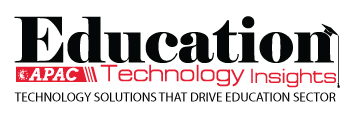THANK YOU FOR SUBSCRIBING
Be first to read the latest tech news, Industry Leader's Insights, and CIO interviews of medium and large enterprises exclusively from Education Technology Insights
Balancing Innovation with Inclusivity to Transform Digital Learning Experiences
Jacqueline Weber, Adjunct Lecturer, Lehman College
 Jacqueline Weber, Adjunct Lecturer, Lehman College
Jacqueline Weber, Adjunct Lecturer, Lehman CollegeJacqueline Weber, Adjunct Lecturer at Lehman College, creates inclusive, technology-enhanced learning spaces that empower diverse students to connect their experiences with academic study. By integrating digital tools and multimedia storytelling, she fosters creativity, accessibility and engagement—helping learners build confidence in expressing ideas across written, visual and oral forms while preparing them to apply critical thinking and communication skills beyond the classroom.
Fostering Inclusive and Reflective Learning Through Digital Tools
I use platforms like Brightspace and Blackboard as interactive learning hubs that extend engagement and community way beyond the classroom. Each course module includes clear objectives, readings and multimedia resources designed to help students connect course themes to their own lived experiences. I include digital journals, discussion boards and multimedia submissions to aid participation between class meetings and to foster reflection; I post resources and allow students to post their own questions and comments without assessment to show that not everything was meant for grading. Accessibility and inclusion guide my design choices; materials are captioned, deadlines are flexible and layouts are mobile-friendly. This allows my adult learners, who take my class virtually, to balance coursework with their personal and professional responsibilities while maintaining a sense of connection and support.
“These usages of technologies not only bridge language and digital divides but also develop belonging and agency. This can empower students to see their stories as central to the collective learning process.”
Through digital storytelling platforms, online discussion spaces and multimodal assignments, I invite students, especially immigrant, first-generation and multicultural learners, to connect academic content with their own narratives and community experiences. Tools like Brightspace journals and multimedia annotation platforms create adaptable entry points for representation beyond traditional essays, allowing students to engage through language, image and auditory resources. I curate open educational resources (OER) that reflects a range of cultural depths, guaranteeing representation in course materials. These usages of technologies not only bridge language and digital divides but also develop belonging and agency. This can empower students to see their stories as central to the collective learning process.
Empowering Student Voices with Multimodal Storytelling
I find it is important to embrace technology as a bridge, not a barrier, to meaningful human connection. Through the utilization of technology’s structure and accessibility, I ensure that empathy, dialogue and trust remain at the center of my teaching. Brightspace allows my students to post discussion prompts, reflection journals and personalized feedback, that can be anonymous, their classmates and myself. During live or asynchronous sessions, I prioritize relational moments like story sharing, small group discussions and creative responses, to build community. I find this maintains a learning environment where students feel seen, supported and valued as individuals.
Addressing Digital Barriers to Strengthen Human Connection in Learning
One ongoing challenge in my role is balancing the varying and everchanging levels of digital literacy and access among students, especially the adult learners, those returning to school after long absences or balancing complex life responsibilities. To address this, I frame assignments carefully, offer low-stakes practice with new tools and provide clear, accessible guides. I also create open paths for communication and feedback to identify difficulties early. Another challenge is sustaining engagement in hybrid settings, which I address through multimedia storytelling, reflective journaling and community-based projects that connect academic learning to students lived experiences.
Shaping the Next Era of Personalized Learning
Over the next five to 10 years, I anticipate digital pedagogy will become increasingly centered on personalization, collaboration and social connection rather than content delivery alone. Advancements in AI and adaptive learning will allow for more individualized feedback and flexible learning pathways, while virtual and enhanced reality tools will expand opportunities for experiential learning across disciplines. However, human elements, mentorship, equity and cultural relevance, will remain necessary. The most successful educators will be those who balance innovation with inclusion, using technology to enhance empathy, creativity and access rather than replace them.
Key Advice for Aspiring Leaders
For professionals aiming to grow in higher education and educational technology integration, adaptability, empathy and reflective practice are essential. Technical skills, such as facility with learning management systems, digital storytelling and data-informed design, are important, but so is the mindset behind their use. Effective educators lead with curiosity, cultural awareness and a commitment to continuous learning. They understand that technology should serve pedagogy, not dictate it. Inclusivity and fairness must guide every decision. Cultivating these habits of mind ensures that one remains both pioneering and human-centered in progressing educational landscape.
Read Also
From Isolation to Interaction: Reimagining Technology for Human Connection
Building an Understanding of AI in Learning Environments
Integrating SEL, Digital Citizenship, and AI Literacy in K–8 Schools
Preparing Students for More than their First Job
Moving Beyond Reaction to Proactive Student Engagement
Tech-Enabled, Human-Centered: Effective Student Support

I agree We use cookies on this website to enhance your user experience. By clicking any link on this page you are giving your consent for us to set cookies. More info

However, if you would like to share the information in this article, you may use the link below:
www.educationtechnologyinsightsapac.com/cxoinsights/jacqueline-weber-nid-3533.html




















